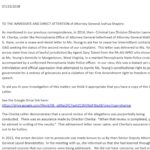Pennsylvania lawmakers will have some demographic changes to consider as they redraw the legislative and congressional district lines this year.
The population is moving, and Pennsylvania is more racially diverse than it was a decade ago, data released Thursday from the U.S. Census Bureau show.
Of Pennsylvania’s 13 million people, 75 percent are white, compared to 2010 when 81.9 percent of Pennsylvania’s population was counted as white.
The black or African American population is currently 10.9 percent, virtually unchanged from 2010’s count of 10.8 percent.
The Asian population is 3.9 percent, showing growth compared to 2010 when 2.7 percent of Pennsylvania’s population was Asian.
Those classified as “some other race alone” make up 3.9 percent of the population compared to 2.4 percent in 2010.
Those identifying as two races of more are now 6 percent of Pennsylvania’s population according to the new numbers, a major growth compared to 1.9 percent in 2010.
In total, those with Hispanic origins make up 8.1 percent of the current population.
While population decreased in western and northern Pennsylvania, southeast Pennsylvania saw population growth, with Cumberland County showing 10.2 percent growth over the decade, the largest percentage in the state. Susquehanna County showed the greatest population decline, losing 11.4 percent of its population.
Pennsylvania’s population is growing more slowly (up 2.4 percent) compared to other states, so it loses one congressional district and will have just 17 U.S. representatives. In 1910, Pennsylvania had 36 congressional seats but has lost representation every decade since then. Pennsylvania is one of seven states losing one seat.
Texas, (population up 18.9 percent) gains two seats and will have 38 House representatives; California, (up 6.1 percent) lost one seat but still has 52 representatives, the most of any state.
The Census Bureau is required to provide states with detailed “small area geography” data which they use to conduct legislative redistricting. This informs the redistricting that happens every 10 years.
Pennsylvania’s State Government Committee will redraw the federal congressional lines; the Legislative Reapportionment Commission draws the lines for state senators and representatives. This commission is hosting public hearings to get input from voters about where the lines should be drawn.
The districts lines can be controversial when mapmakers use demographics to predict which voters are likely to support one party over another, and slice municipalities into unnatural shapes to get a majority of desired voters.
In February 2018, under order of the Pennsylvania Supreme Court and as part of a lawsuit brought by the League of Women Voters and individual voters, the lines were unexpectedly redrawn. The lawsuit complained Pennsylvania’s 2011-drawn congressional map was unfairly gerrymandered, fracturing counties and municipalities into many pieces to create districts with a minority of Democratic voters and favoring Republicans.
Leadership in the legislature’s majority party draws proposed congressional maps that become a bill to be passed by the state House and Senate and signed by the governor. In 2011, the map was passed in about a week by the then Republican-led legislature and governor.
Pennsylvania’s current Democratic Gov. Tom Wolf would likely veto any map he deems unfair.






